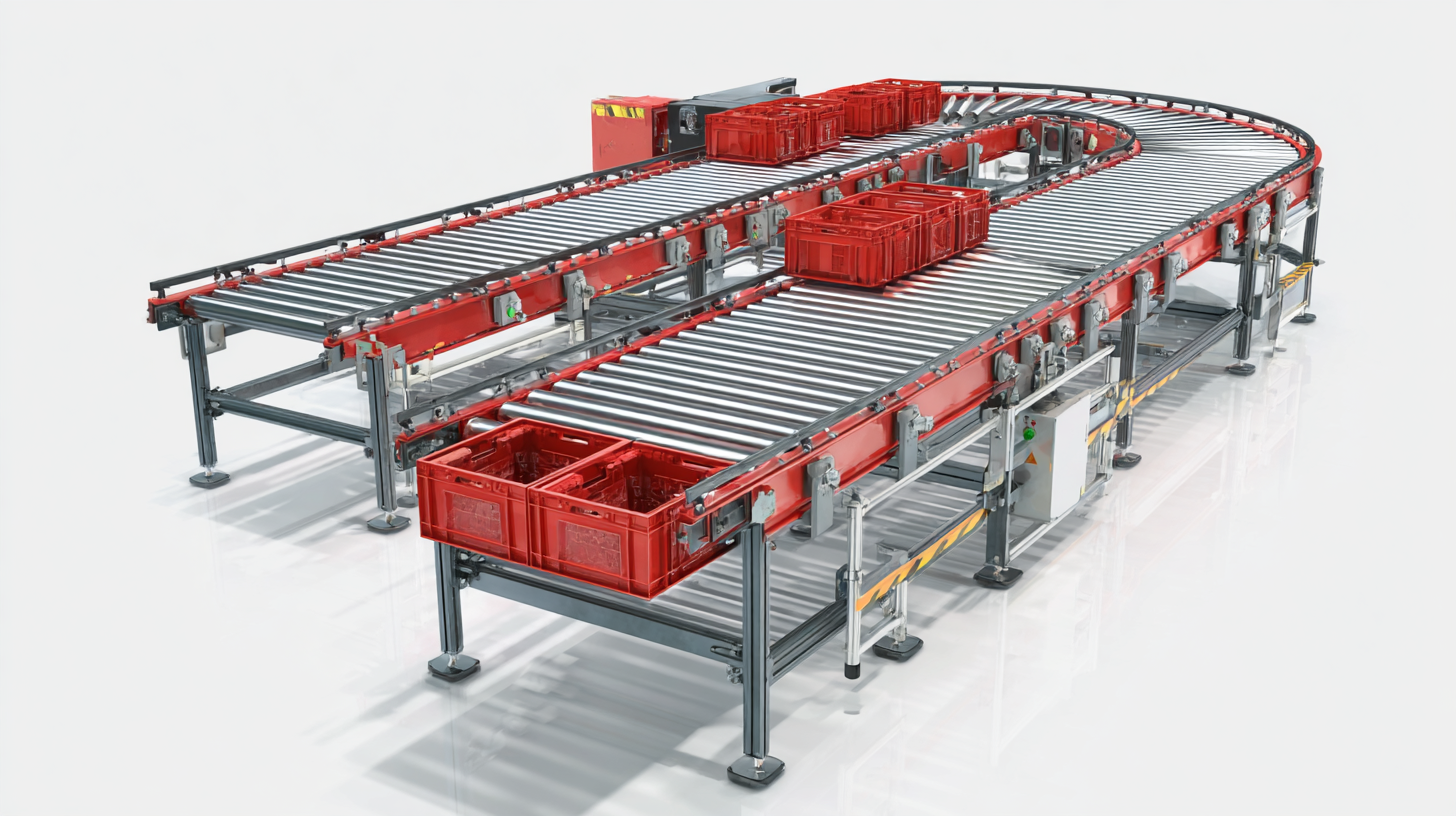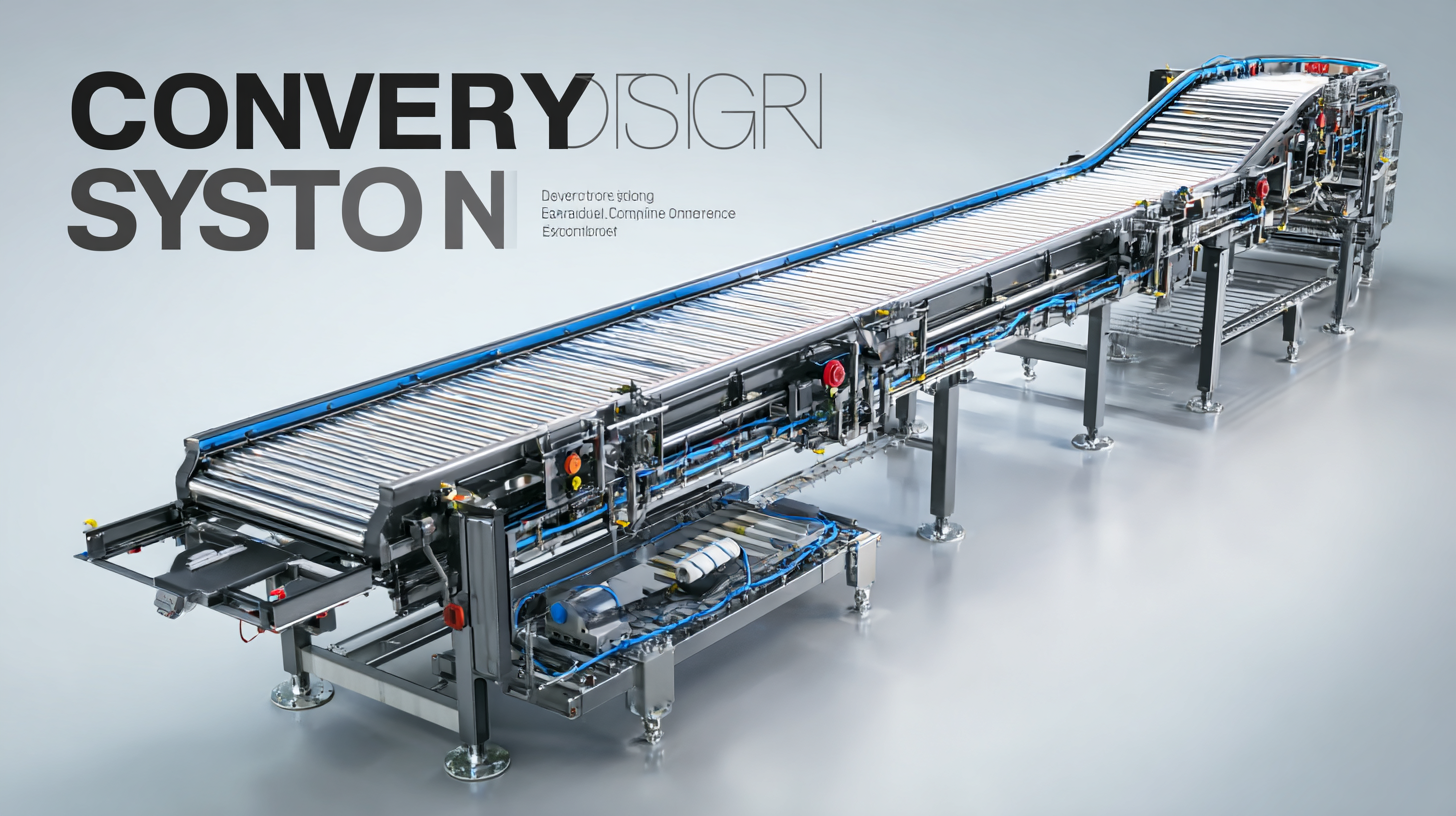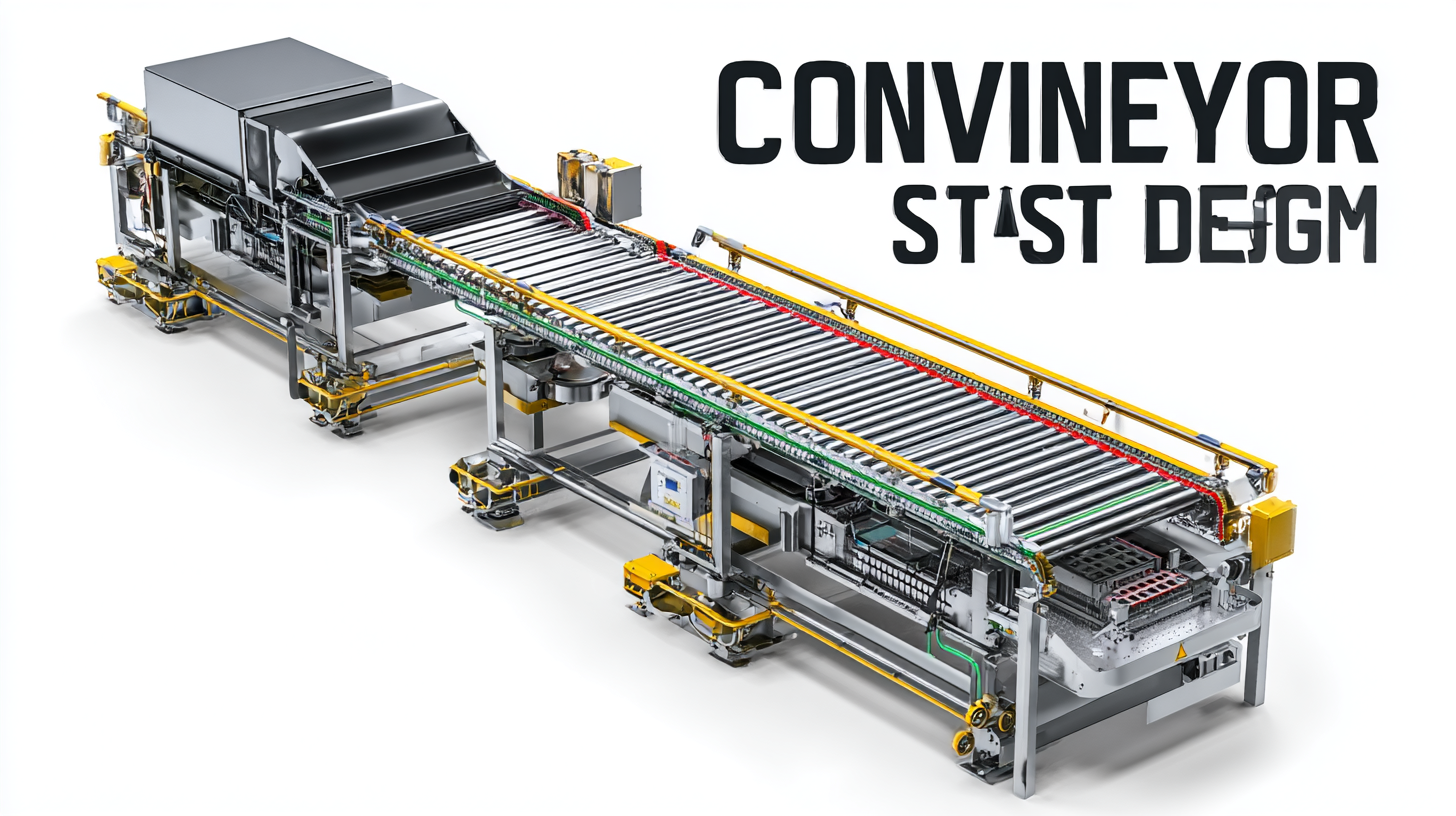In the ever-evolving landscape of manufacturing, the importance of an efficient Conveyor System Design cannot be overstated. As global industries strive for enhanced productivity and streamlined operations, embracing innovative conveyor solutions has become a vital strategy for success. From automating material handling to optimizing space, a well-thought-out conveyor system can significantly impact overall operational efficiency.

This blog, "25 Best Conveyor System Design Ideas for Optimal Efficiency," explores cutting-edge designs that harness the immense potential of these systems. As we navigate through various design concepts, we recognize the profound influence of China's manufacturing prowess in setting benchmarks worldwide. By integrating these ideas into your operations, you can leverage the competitive advantages offered by advanced conveyor systems to boost productivity and drive sustainable growth in the manufacturing sector.
When designing a conveyor system for maximum efficiency, several key factors must be taken into account. First and foremost is the layout of the conveyor. An optimal layout minimizes the distance materials must travel, reducing both time and energy costs. Consider incorporating curves and slopes to facilitate smoother transitions and maintain product flow. The design should also consider the types of materials being moved; heavier, bulkier items may require more robust components, while smaller, delicate goods may necessitate gentler handling systems.
Another critical factor is the selection of conveyor speed. Determining the right speed not only influences the overall throughput but also impacts the wear and tear of the system. A conveyor operating too quickly can lead to product damage and increased maintenance, while one running too slowly may hinder productivity. Additionally, it’s essential to integrate advanced controls and automation technology for real-time monitoring, which optimizes performance and reduces downtimes. Balancing these considerations ultimately leads to a well-designed conveyor system that achieves peak efficiency and meets operational goals.
| Design Idea | Key Features | Efficiency Benefits | Considerations |
|---|---|---|---|
| Modular Conveyor Design | Flexible segments, easy reconfiguration | Quick adaptation to changing layouts | Initial setup and cost considerations |
| Automated Guided Vehicles (AGVs) | Wireless navigation, smart routing | Increased throughput and reduced labor costs | Integration with existing systems |
| Belt Conveyor with Variable Speed | Speed adjustment capability | Optimized material handling speed | Motor and electrical requirements |
| Incline and Decline Conveyors | Adjustable angles for elevation | Efficient vertical material movement | Structural support considerations |
| Modular Belt Conveyor | Interchangeable belts for different loads | Versatility in applications | Cost of spare parts |
| Overhead Conveyor Systems | Utilizes ceiling space for transport | Maximizes floor space availability | Installation cost and planning |
| Smart Sensors | Real-time tracking and performance metrics | Enhanced operational insights | Sensor maintenance and placement |
| Vibrating Conveyors | Gentle handling of bulk materials | Minimized product damage | Vibration control and management |
| Pneumatic Conveyors | Air-powered material movement | Suitable for delicate materials | Airflow and compressor requirements |
| Flexible Chain Conveyor | Curved pathways and layout flexibility | Accommodates complex transport routes | Durability and maintenance of chains |
| Heavy-Duty Roller Conveyor | Sturdy rollers for heavy loads | Enhanced load capacity | Space requirements and structural support |
Innovative technologies are reshaping conveyor systems, driving unprecedented improvements in performance and efficiency across various industries. One of the most notable advancements is the integration of IoT (Internet of Things) devices, which enables real-time monitoring and data analytics. This capability allows businesses to track system performance, anticipate maintenance needs, and optimize workflow dynamics. With smart sensors providing critical insights, companies can swiftly adjust operations, reducing downtime and enhancing throughput.
Moreover, automation and robotics are revolutionizing conveyor system design. Advanced robotic arms integrated with conveyor belts streamline sorting and packaging processes, minimizing human error and increasing speed. Additionally, the use of AI algorithms facilitates intelligent routing of products, ensuring that items are delivered precisely where needed, at the right time. These technologies not only boost operational efficiency but also lead to significant cost savings and improved safety standards in industrial settings. By harnessing these innovations, businesses can transform their conveyor systems into highly adaptable, efficient, and reliable solutions.
Selecting the right conveyor components is crucial for optimizing efficiency in any manufacturing or logistics operation. According to a report from the Material Handling Industry of America (MHIA), an efficient conveyor system can improve productivity by up to 30%. This underscores the importance of understanding the specific needs of your operation before making component selections. For example, choosing the correct belt type—be it flat, modular, or roller bed—depends on the materials being transported and the desired speed of movement.
Moreover, considering the layout and environmental factors can significantly enhance system performance. Research by the Conveyor Equipment Manufacturers Association (CEMA) indicates that integrating automated controls and sensors can reduce energy usage by as much as 25% while also minimizing downtime through predictive maintenance. Components such as variable speed drives or adjustable ploughs can also provide flexibility, allowing conveyor systems to adapt to various product sizes and shapes, thereby maximizing throughput. By implementing these best practices, businesses can ensure that their conveyor systems not only function optimally but also contribute to sustainability goals within their operations.
This chart represents the efficiency ratings of various conveyor system components based on industry standards. The data indicates how different components contribute to the overall efficiency of a conveyor system.
In today’s fast-paced manufacturing and logistics environments, the need for customized conveyor systems has become paramount. Each industry has unique requirements that standard conveyor systems may not adequately address. For instance, food processing demands conveyors that comply with strict hygiene standards, requiring materials that are easy to clean and resistant to corrosion. Pharmaceutical industries, on the other hand, often necessitate conveyors that minimize contamination risks and accommodate intricate packaging processes. Therefore, tailoring conveyor designs to meet specific industry needs can significantly enhance operational efficiency.

Customization goes beyond merely selecting the right materials; it involves engineering conveyor systems to integrate seamlessly with existing workflows. By analyzing specific production requirements, companies can implement features such as variable speed controls, adjustable heights, and modular designs that allow for easy reconfiguration as business needs evolve. For instance, automotive assembly lines may benefit from dynamic conveyor systems that can adjust to different vehicle models without extensive downtime. Ultimately, investing in a tailored conveyor system can streamline processes, reduce labor costs, and boost overall productivity, making it a crucial component of modern industrial operations.
Energy efficiency in conveyor system operations is critical for modern manufacturing and logistics industries. According to a report by the U.S. Department of Energy, conveyor systems can account for up to 25% of a facility's total energy use. With this in mind, optimizing these systems becomes not just a matter of cost savings, but also a step towards sustainability. Implementing energy-efficient motors and variable frequency drives (VFDs) can reduce energy consumption significantly, potentially by 30% or more over traditional systems.
Additionally, proper system design plays a crucial role in energy efficiency. Research from the Conveyor Equipment Manufacturers Association (CEMA) indicates that selecting the right belt width, length, and speed can lead to substantial improvements in energy use and material handling efficiency. By integrating advanced technology like smart sensors for real-time monitoring and predictive maintenance, facilities can further optimize their conveyor systems, reducing unnecessary energy waste while enhancing overall performance. Adopting these innovative approaches not only helps companies cut costs but also drives them closer to achieving their environmental goals.

